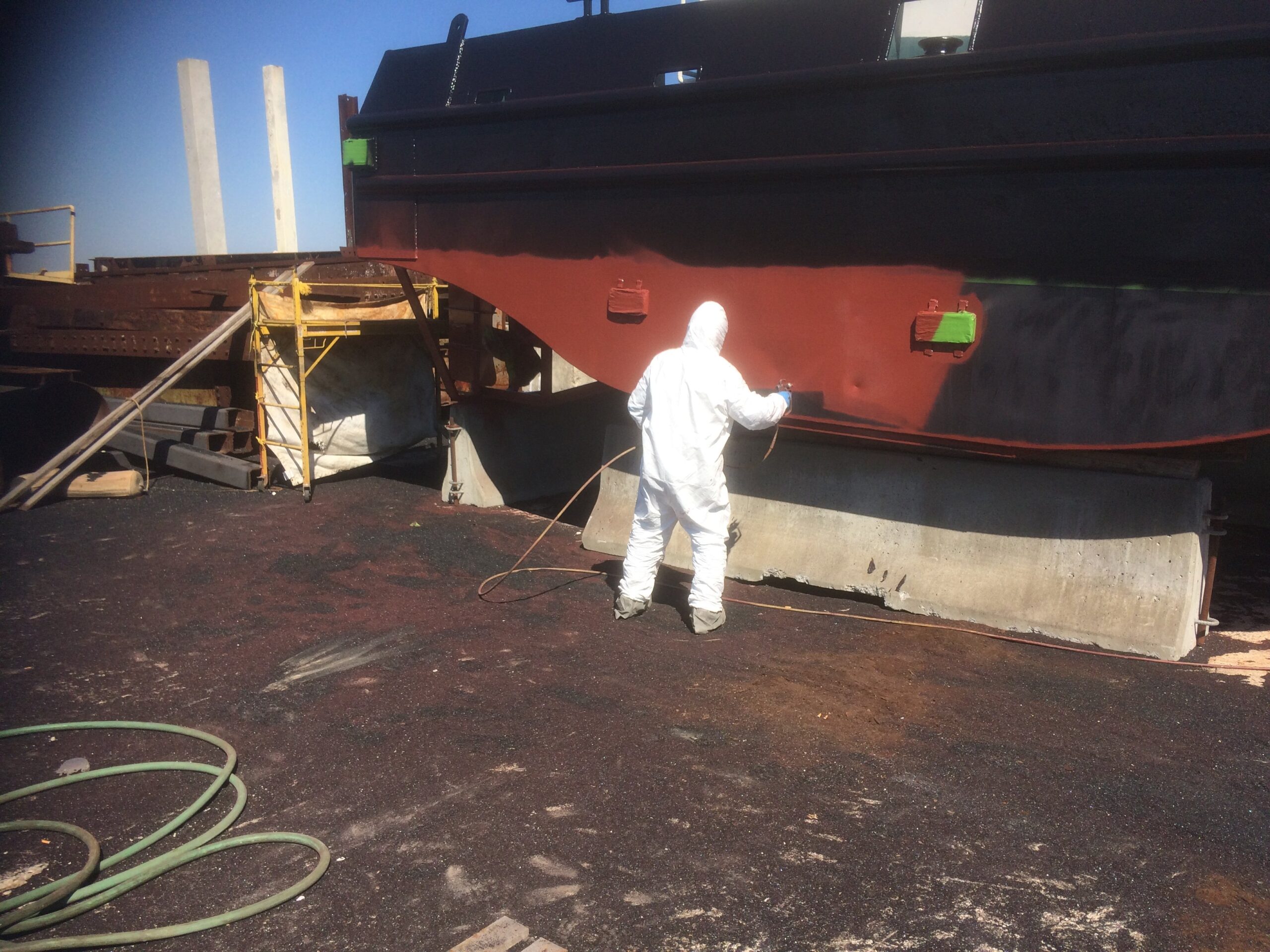 Direct to metal (DTM) coatings are becoming more popular in the industrial setting as a whole and marine environments in particular. DTM formulas enable high quality coatings to be applied directly to a metal substrate without the use of a primer. They are applied by spray, brush, roll, or coil coating.
Direct to metal (DTM) coatings are becoming more popular in the industrial setting as a whole and marine environments in particular. DTM formulas enable high quality coatings to be applied directly to a metal substrate without the use of a primer. They are applied by spray, brush, roll, or coil coating.
This eliminates the time-intensive process of cleaning, pretreating, and sealing the substrate.
The use of a single coat of product has a number of benefits for light industrial applications. Perhaps most notably, fewer coats of paint translate directly into greater cost savings. This is achieved without having to sacrifice the quality of the protection provided.
Most DTM coatings are considered suitable for C3 settings under the ISO 12944 corrosivity guidelines. This makes them ideal for offshore and marine settings, including marine vessels, oil platforms, and more.
DTM Coatings Address Many Concerns that Go into a Marine Coating Project
Coating projects for the marine environment are often complicated by a number of factors. A vessel may have only a short period of time for maintenance before it must continue its normal operations. Offshore coating projects must contend with harsh environments, unpredictable weather, and tight schedules.
With all this in mind, the advantages of DTM coatings are significant.
Facilities leaders in various industries are flocking to DTM for its potential cost savings. In the marine sphere, however, those savings are only the beginning. It is not an exaggeration to say that DTM should be considered as a first option when developing a coating strategy at sea.
Some of DTM’s other key advantages include:
1. Rapid Productivity
Use of a single coating means your entire project can be completed in virtually half the time. There is also no waiting through a lengthy curing period, which makes many coatings unsuitable due to their inability to withstand sea air until they have fully cured.
2. Superior Adhesion
With great variation between different metals and alloys, it can be a crucial mistake to regard metal as a single substrate with uniform qualities. DTM coatings are formulated for superior adhesion, reducing the risk of coating failure. Despite the name, some DTM products can also be used with pretreatments.
3. Corrosion Protection and Water Resistance
Thorough corrosion protection is perhaps the biggest concern for marine workplaces. DTM coatings are optimized to resist corrosion and oxidization and support longevity for treated substrates. They can also be highly hydrophobic and shore up the weathering risks associated with various metals and alloys.
4. Enhanced Longevity
Once in place, DTM coatings require minimal maintenance and are easy to keep up-to-date. Their high resistance to abrasion means they are unlikely to suffer damage that harms overall coating performance. Maintenance cleaning and recoating can take as little as a few minutes.
5. Relative Ease of Application
DTM coatings have a propensity to be forgiving about temperature, humidity, and other local conditions that can cause primer-topcoat systems to fail early in their service life. Likewise, specialized equipment is kept to a minimum, greatly enhancing safety for coating professionals and other personnel.
6. Environmental Sustainability
DTM coatings have been developed in part as a response to the growing emphasis on reducing volatile organic compounds. In enclosed spaces, VOCs can present extreme dangers to anyone coming in contact with large quantities of coating products. DTM is another step toward a low- or no-VOC environment.
Enhance Your Coating Strategy with DTM Coatings for Marine Workplaces
Oil drilling operations and offshore rigs are two of the main consumers driving growth in DTM coatings. Aluminum, cold rolled steel, hot rolled steel, and all commonplace coated metals can benefit from them. Their compatibility with Galvalume means that commercial and residential metal roofing is another area where DTM is poised to break through.
The variety of DTM coatings is also growing fast. DTM is available as solvent-borne, waterborne, or high solid solutions, with formulas including one- or two-component acrylic, epoxy, urethane, or self-curing unsaturated polymers. Optimal performance still depends on choosing the right solution for the job!
With all this in mind, there is still room in the marine setting for traditional primer-topcoat coatings.
DTM is still a relatively small part of the coatings category, but it is growing fast. Facilities leaders do not need to rush to refresh their coating strategy with DTM, but they should remain aware of the benefits and ensure they are moving with the times as maintenance offers opportunities to update coatings.
If you are eager to benefit from the greatest efficiency for your workplace, it is a wise idea to get advice from a team of professional painting contractors familiar with DTM application and maintenance. Done right, DTM projects can be performed with virtually no operational disruption and will help you keep overhead related to your metal substrates lower for years to come.






